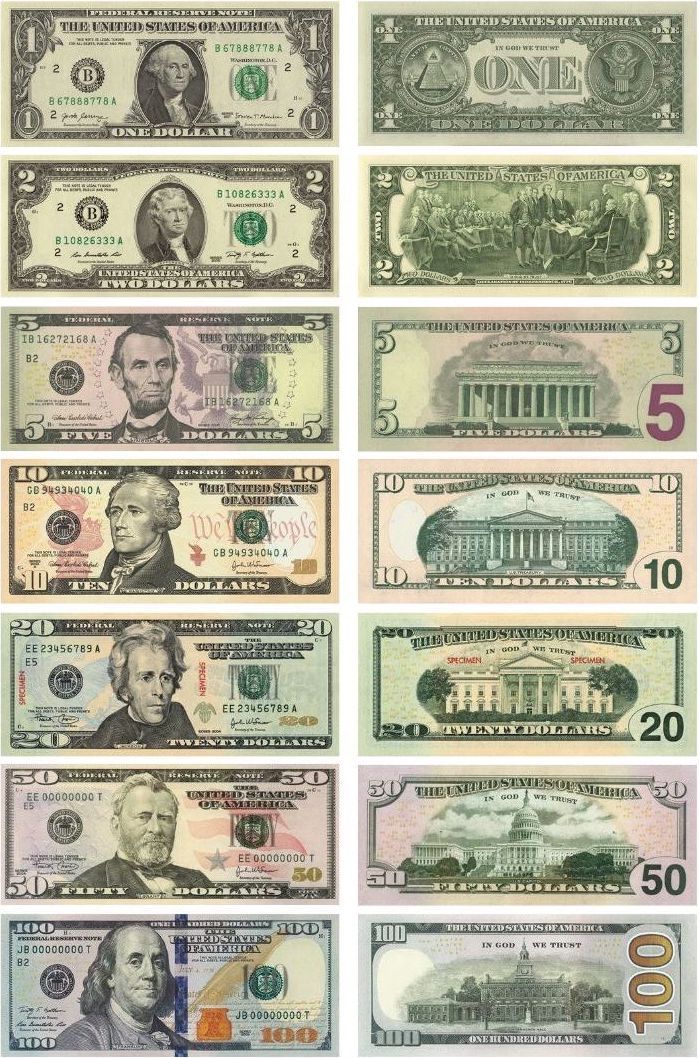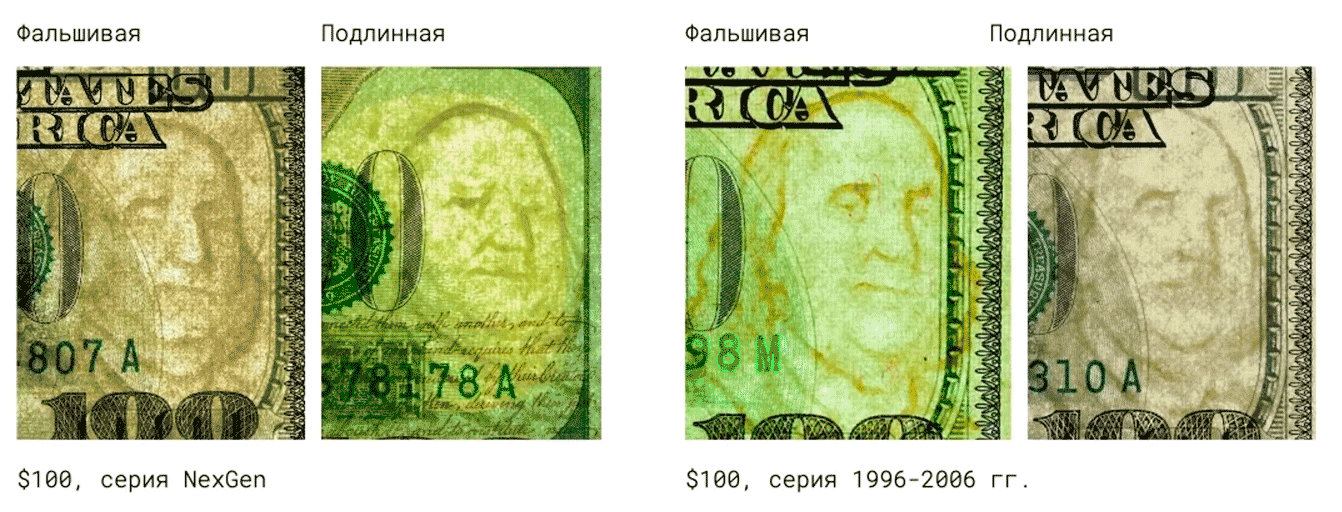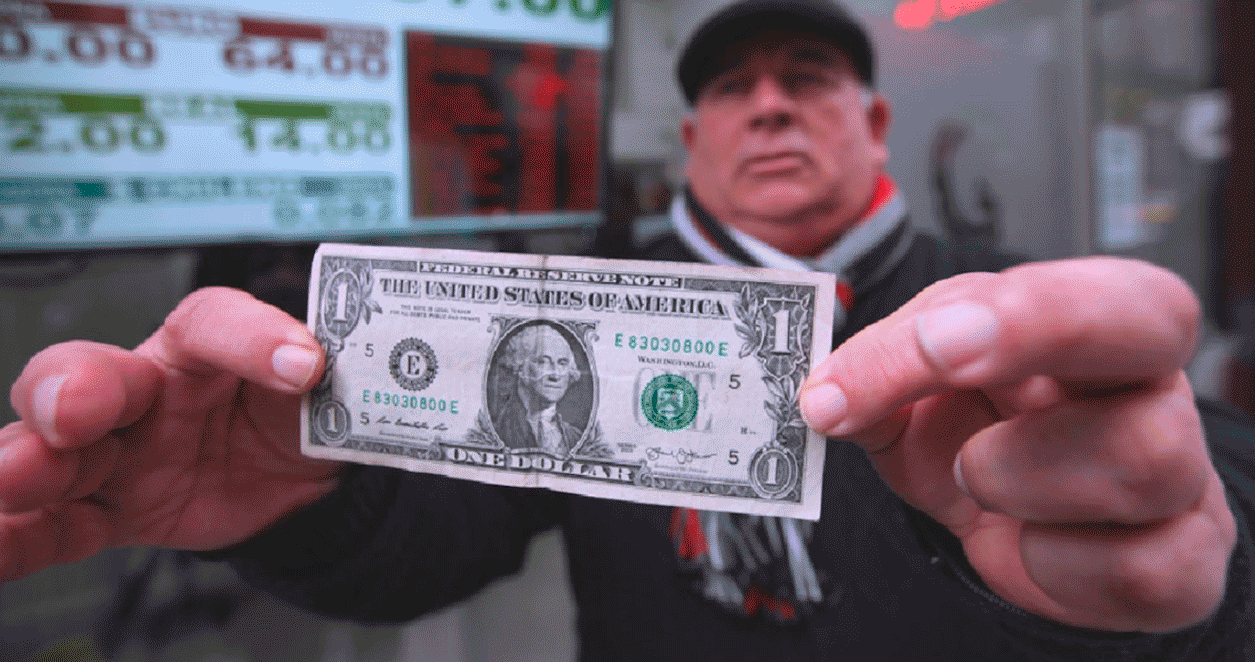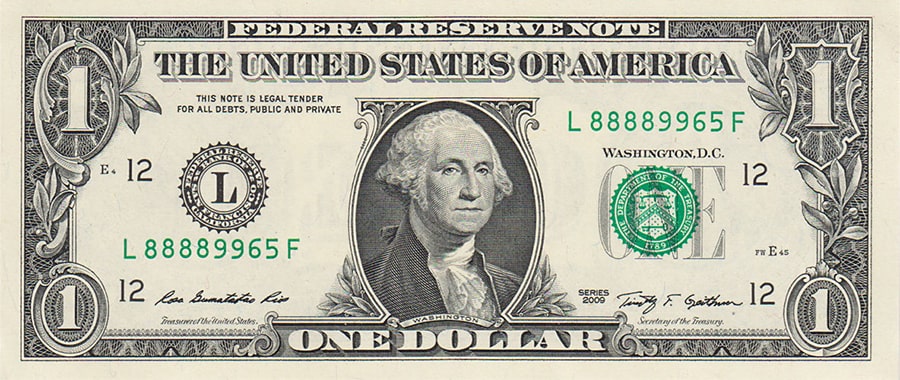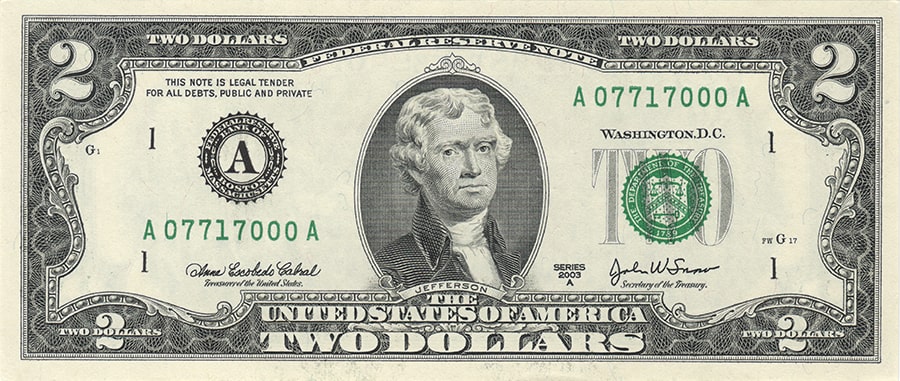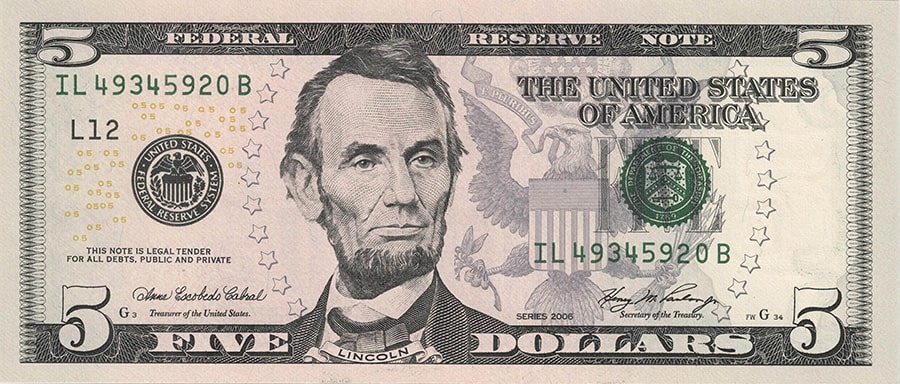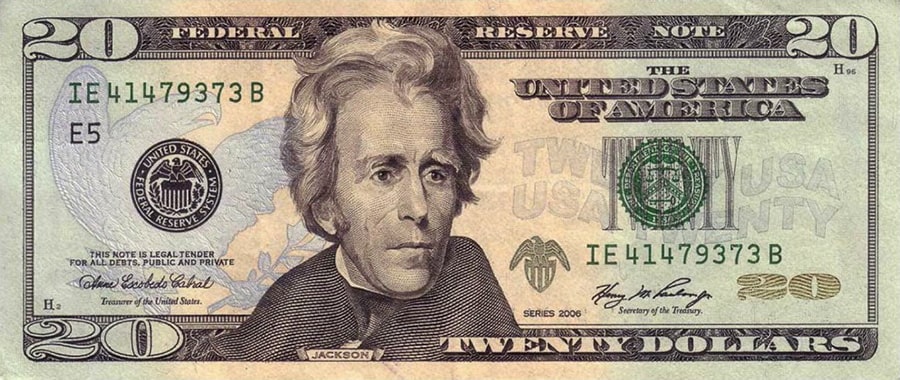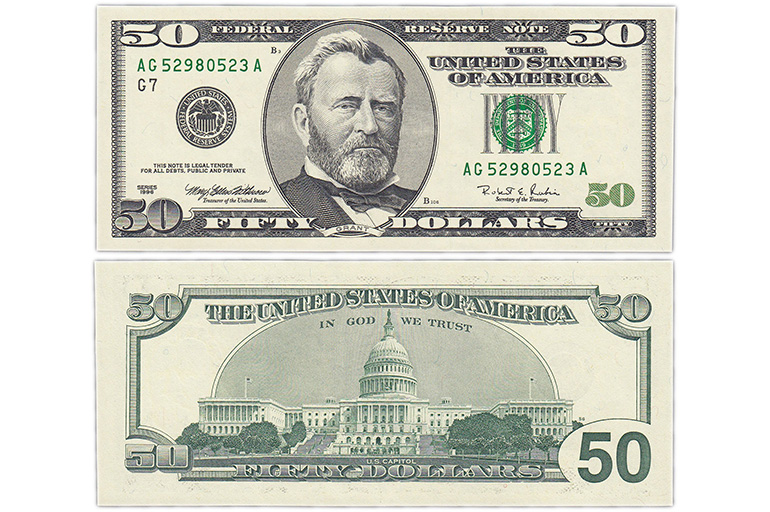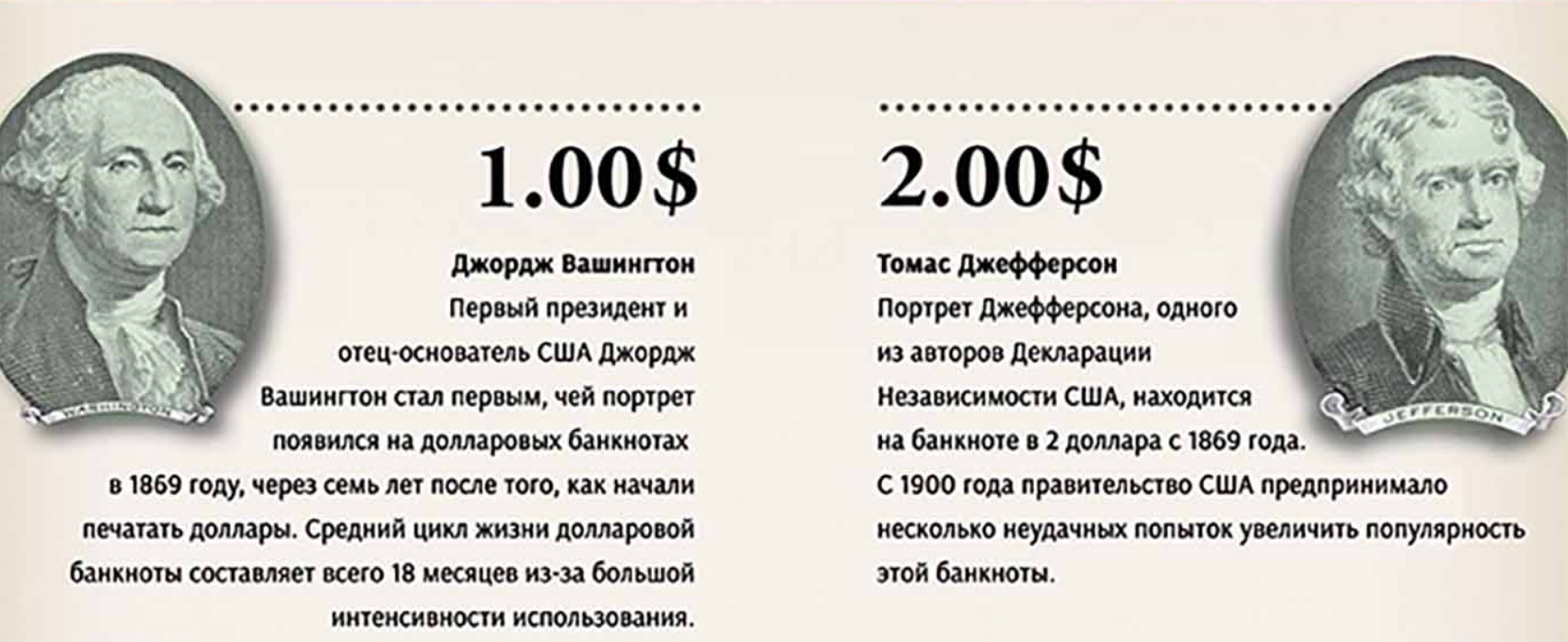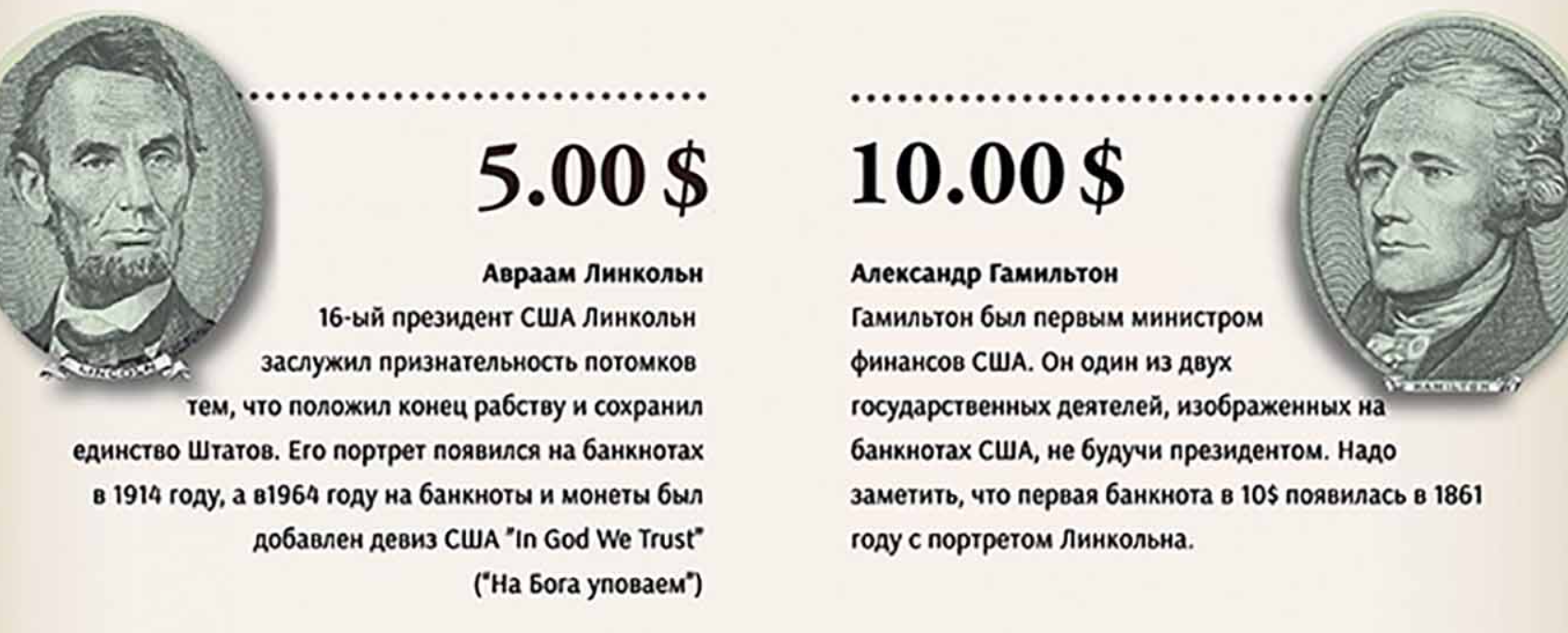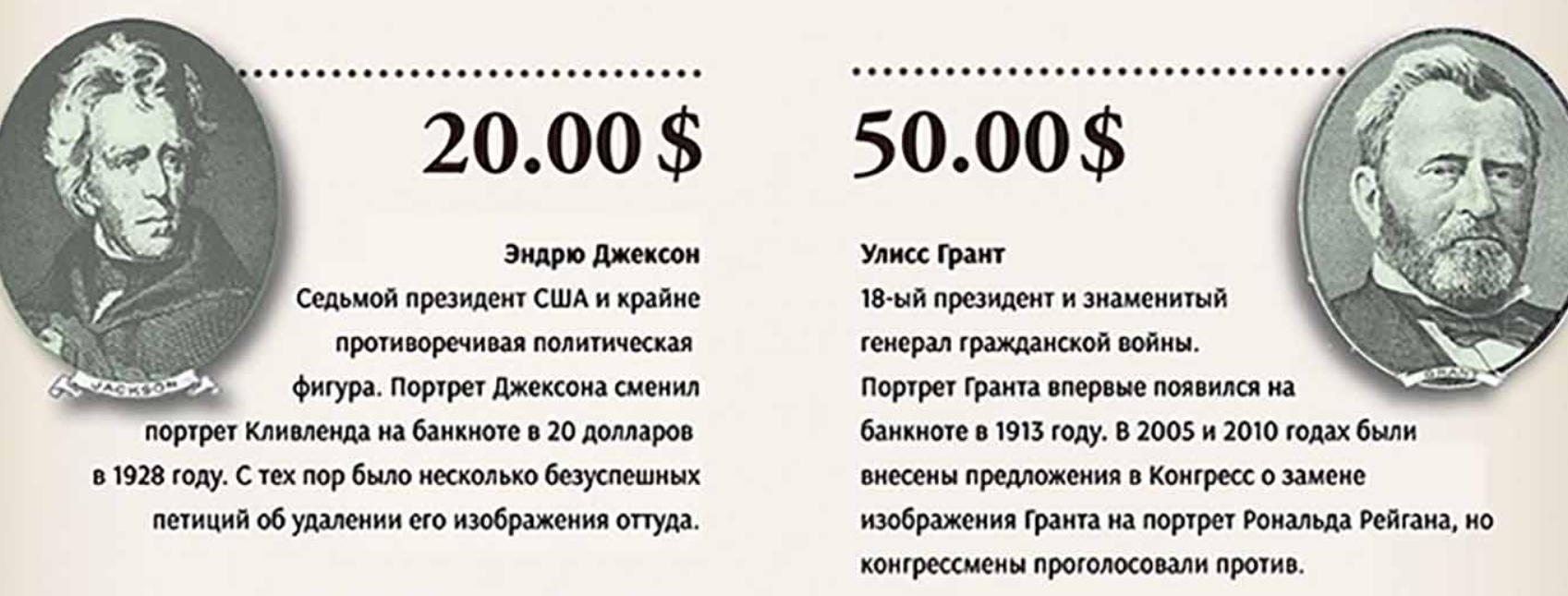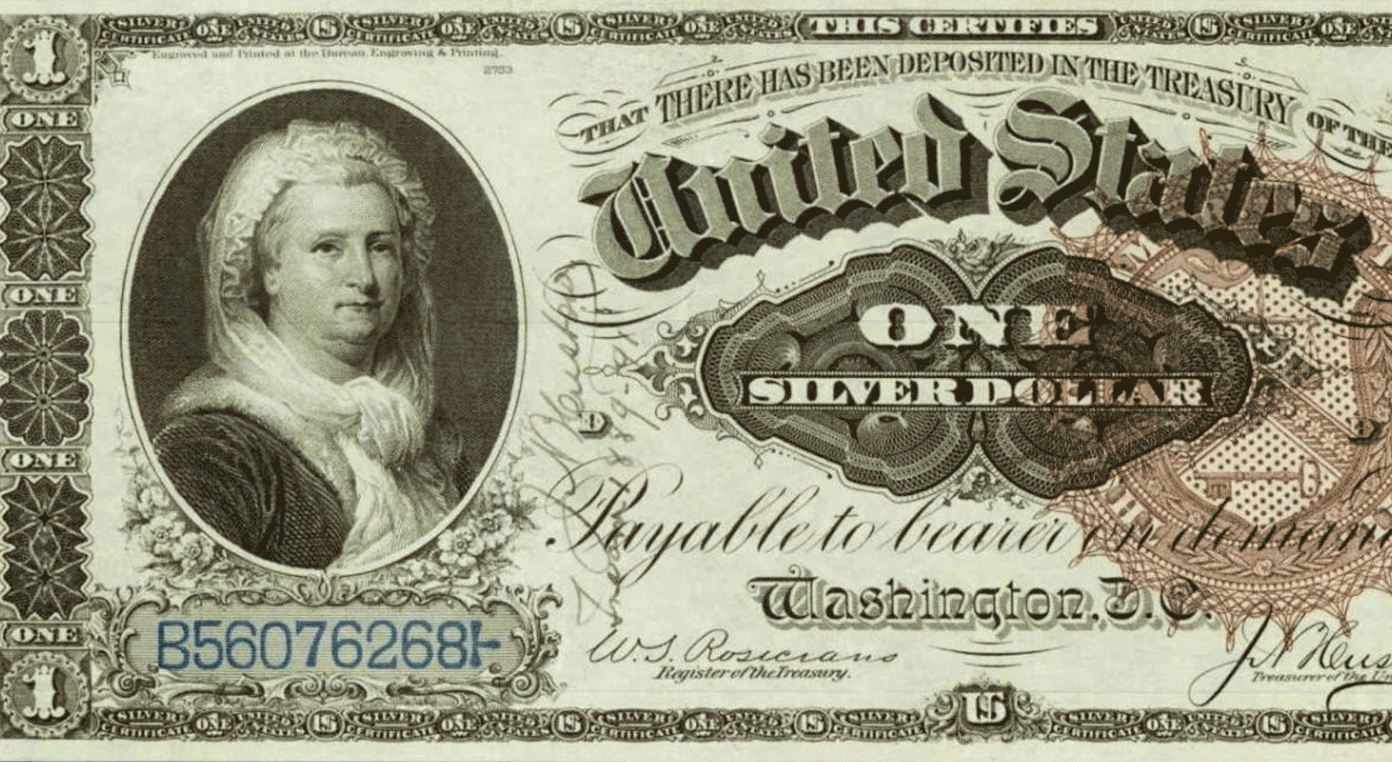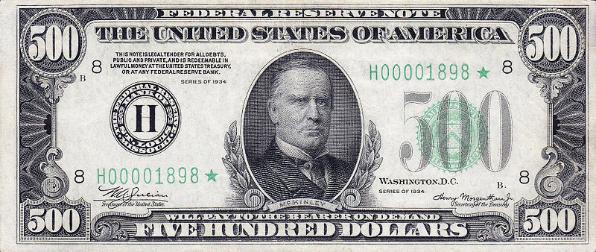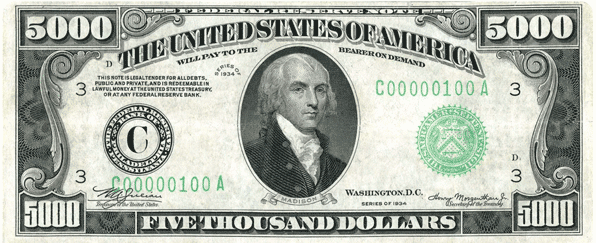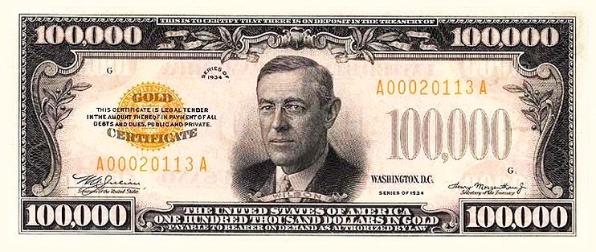The American dollar is widely accepted and popular all over the world. Used as a monetary unit, it is the main currency of a number of countries. It can also be a backup. Or act as an instrument of mediation of trade operations. Not surprisingly, counterfeits of dollars are quite often contrived and implemented by counterfeit money makers. Protective measures on the bill, the vigilant attention of the person in whose hands it ended up will help prevent deception.
Specific features of dollars
All dollar bills have the same size of 15.59 by 6.62 cm and a weight of approximately 1 g. Data related to the production of American money is strictly secret: the composition of paints, paper, security details are unknown. They are not made from wood raw materials, but by pressing, weaving 75% cotton and 25% linen fibers. Dollar bills also have the following features.
- Similar in appearance to paper due to special pressure treatment with high temperature.
- The fibers are parallel to the sides, not diagonally.
- Pale yellow or greyish cream color, no bleach. The paper looks dark, does not luminesce under ultraviolet light with a wavelength of 366 nm. Dollar bills also do not have gloss.
- The density and elasticity of banknotes do not prevent them from "crunching", which allows you to determine the real dollar and distinguish it from a fake.
- When trying to tear, the material first stretches, then returns to its original position.
- The linen mesh structure includes red and blue silk fibers visible with a magnifying glass. First of all, check the authenticity by the presence of protective hairs. Fraudsters who make a fake dollar are not able to introduce them into the structure.
- Drawings and inscriptions on the front side are made with black magnetic ink. The exception is the image of the bank seal and code.
- The reverse side of the banknotes uses green ink without magnetic properties.
- By placing a dollar on white paper, pressing with your fingernail and drawing a line, you can see a green or black mark. It is rather a proof of authenticity, a sign indicating originality, not a fake.
- The US dollar has the inscription: "In God we trust", which means "We trust in God."
- Each denomination of US dollars has its own period of use. 1 dollar, 5 and 10 wear out quickly, are in circulation for about 20 months - the maximum period. The rest serve about 5 years.
Dollars are made using the intaglio printing method. First prepare the back side. Then dry it at 135 Degrees C and reproduce the front black paint.
Manufacturing defects in the production of banknotes are transferred to farmers for fertilizer. As a result, vegetables and fruits literally grow on the dollar.
On the territory of the Russian Federation, the American dollar currency is present in everyday life. Today, everyone can buy, store it, pay abroad or when visiting an online store. Knowing what US dollars look like, having familiarity with the methods of verifying the authenticity of a bill, it is easier to protect yourself from fakes. Examining photographs of money will help you get a visual idea. In order not to become a victim of fraud, you should remember the description of the appearance, find out what denominations are. And also learn to recognize real banknotes, distinguish them from fakes. The following methods and recommendations may suggest how to authenticate.
- To the touch on the structure, which is not so easy to tear in the originals, embossed paint, intaglio printing. By running your fingernail over the image of the clothes in the portrait, you can feel the bulge of the parts of the picture, which cannot be faked.
- To know how to check dollars by the thickness of the paper, one must keep in mind the fact: real money is thinner, they are printed under great pressure.
- In appearance: a fake may show a lack of detail, blur. The dim portrait and its merged details, the dark uneven background indicate deception. It is advisable to use a magnifying glass. On one side of the depicted personality, the words "The United States of America" are microprinted.
- How to check the US dollar for authenticity by security features? You need to look it into the light, look for a security thread going from top to bottom, which is not only on 1 and 2$. Symbols are written along this strip: "USA" and the denomination. And under ultraviolet light, it glows with a shade corresponding to the value: blue for 5$, orange for 10, green for 20, yellow for 50 and pink for 100. To the right of the portrait of 5-100$ bills, a watermark depicting a face is visible. Banknotes from 10$ change ink color from green to black when tilted.
- A comparison with a real bill of the same series and denomination will help to check.
A photo of banknotes will allow you to first get acquainted with the appearance of various banknotes. And also to determine the location of the typical signs of real money.
Which banknotes are most often counterfeited
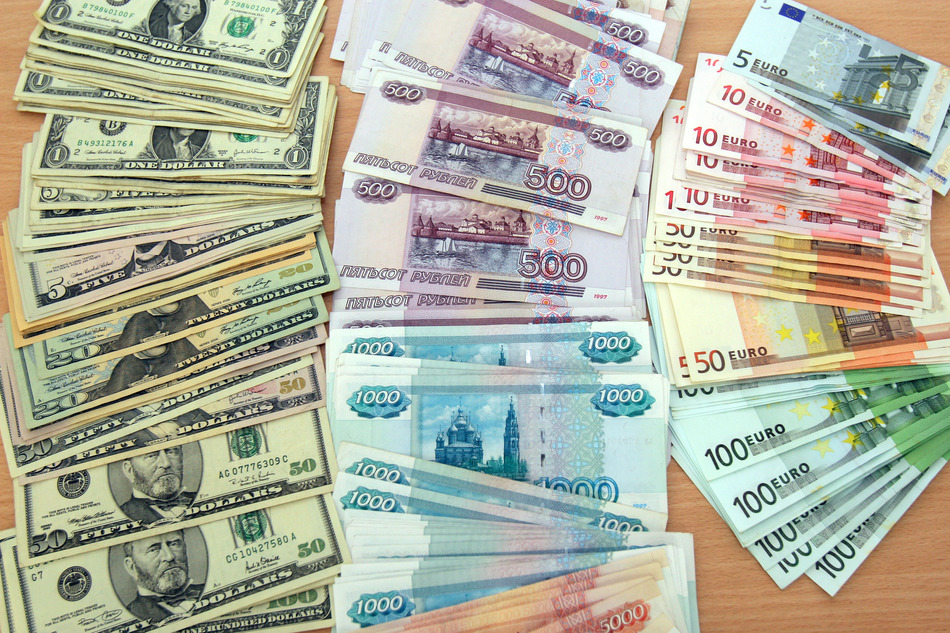
1 and 2$ don't have many security features, because scammers rarely make them. The simplest form of counterfeiting is an increase in denomination. On a banknote of a lower denomination, numbers are written that increase their value. Such money is easily identified by comparing the numbers in the corners with the inscription on the security thread.
By 100$, due to popularity, frequent attempts to counterfeit the banknote, special measures have been taken. So the majority of residents of the Russian Federation, familiar with dollars, had the opportunity to see it. The need for small money arises much less frequently. Such interest raises questions about enhanced protection and how to distinguish a banknote from a fake. The newest 100$ features a micro-print (inscription) on the lapel of B. Franklin's camisole.
In 2004, they expanded the color gamut in the design of banknotes 10, 20, 50$. They also took additional security measures by adding the constellation of Eurion. This picture repeats a pattern of numbers that prevents reproduction by a copy machine.
Banknotes in circulation
The United States issues a different number of banknotes at face value, based on need. One part of the money loses its usefulness over time, the other part is kept by citizens in the form of savings and is not in circulation. Many consider the green currency a good investment, and not just a means of payment.
The Fed (Federal Reserve System) testifies: 99% dollars are in circulation around the planet. The most common US dollar banknotes are money with a face value of 1, 2, 5, 10, 20, 50, 100. The larger ones are rare and are not issued now.
In total, seven types of banknotes are printed, related to the most popular money.
1 US dollar
The least expensive paper bill is one of the most common and corresponds to 100 cents. 1$ often participates in payments, is printed constantly, its life expectancy does not exceed 70 months. At various times it was decorated with portraits of Lincoln, Chase, Grant, wife of D. Washington.
2 USD
This bill is issued in the amount of 1% from the total number of dollars. Therefore, it is quite rare, almost never occurs in calculations. The issue was discontinued in 1966, and after 10 years it was resumed in a small edition. There is a tradition of collecting 2$ in the US and beyond.
$5
The $5 denomination is printed by the US Federal Reserve. It has been in use since 1923.
$10
Now there are banknotes in circulation, which were issued from 1996 to 2013. According to statistics, 10 US paper dollars wear out in about 18 months.
$20
To this day, twenty-dollar bills of a series of issues from 1996 to 2009 are in use. Their average shelf life is 25 months. After 2 years or so, they become dilapidated and must be destroyed. The first time 20 US dollars were printed was in 1861.
$50
The dollar denomination of 50 monetary units exists in the amount of 6% from all the money issued by the US Federal Reserve. The banknote lasts approximately 25 months.
100 USD
The United States of America allows the largest banknote of 100 dollars for circulation. The Bureau of Engraving and Printing testifies to its long service life of about 89 months. The bill is very popular outside of America.
Who is depicted on American dollar bills
The design and decoration of US money (USA or United States of America) includes images of people who have contributed to the creation of a free, independent, prosperous state. These are well-known statesmen, politicians, ministers and leaders of America.
- The first president, George Washington, is featured on the $1 bill. American citizens consider him the father of the nation, who created the Constitution. For the first time this image dates from 1869.
- The third president was Thomas Jefferson, whose portrait adorns 2$. He adopted the Declaration of Independence and also promoted the separation of church and state.
- President Abraham Lincoln, very popular with the American people, is featured on the five dollar bill. It is associated with the abolition of slavery. Since his reign, the foundations of democracy have been laid.
- Statesman, US Secretary of the Treasury Alexander Hamilton did not hold the presidency, but is depicted on the ten dollar bill.
- President Andrew Jackson championed the rights of Native Americans, printed at 20$.
- Willis Grant, who led the United States for the 18th time, was a fighter for equality, a hero of the Civil War. His portrait can be seen on 50$.
- The hundred dollar bill from 1923 includes a portrait of Benjamin Franklin. This is a scientist, diplomat and politician who has done a lot for the United States, being one of the founding fathers of the state. His signature sealed three important documents: the Declaration of Independence, the Constitution, and the Treaty of Versailles in 1783.
A number of statesmen and public figures have been honored to decorate American dollar bills. On the money that was in circulation earlier, the presidents were again printed: McKinley for 500, Grover Cleveland for a bill of 1,000 dollars, Madison for 5,000, and Wilson for 100 000$. A very large 10 thousand note was decorated with a portrait of Chief Justice Chase.
By 2020, the unconventional plan was to replace the portrait adorning 10$ with one of America's preeminent women. But this initiative was not implemented.
Portrait of a woman
The portrait of a woman was printed on the 1886, 1891 and 1896 one-dollar bills. It was a portrait of Martha Washington, wife of the First President of the United States.
The Ministry of Finance in 2010 planned to update 10$. It has been 100 years since the adoption of an amendment to the US Constitution that gave the country's women the right to vote. Regarding this event, it was supposed to print a previously unknown female face. The person who will decorate the banknote was to be chosen by public vote. The competition was held by independent organizations. According to the results, the first place went to Harriet Tubman. Eleanor Roosevelt and Rosa Parks took second and third respectively. As a result, the Ministry did not issue banknotes with the update. Therefore, the portrait of Hamilton will remain on it as before.
Rare US dollar bills
The largest denomination produced to date is the $100. Rare, previously released 500$, 1 000$, 5 000$ are also valuable. There are US dollar bills in denominations of 10,000 and 100,000 from the period before 1945. Subsequently, the need to issue such large banknotes disappeared. In 1969, their seizure began on the basis of a presidential decree. Now they are found in collections and museums, including those outside the United States.
By law, rare denominations of 500-100,000 are suitable for payment, but such cases are practically absent in reality. Outside the collections, they are almost never found.
500 dollars
The banknote is actively used by the Treasury and the Fed in settlements, but practically does not happen to individuals. On the front side - 25 President W. McKinley, the reverse reflects the face value with a frame and inscriptions.
1000 dollars
Similar banknotes are used for transfers between banks. Previously, a lot of them were produced, 160 thousand pieces have not yet been withdrawn from free circulation. The front side is equipped with a portrait of the 22nd and 24th President of Cleveland, the back is covered with patterns.
$5,000
The main element of 5 000$ is the 4th President D. Madison. The face value and the name of the state are written on the reverse side. According to the announcement of the Fed, three bills are exhibited by museums, 183 are in the possession of collectors.
$10,000
The peculiarity of the banknote is its uniqueness. There is only one, dated 1918, others, 1934, from 3 to 5 pieces are in the possession of collectors. The front side is decorated with a portrait of the politician Chase. The reverse is provided with inscriptions indicating the denomination and the state.
$100,000
Only 42 thousand copies of the banknote painted in gray and orange were produced. It is used only for settlements between banks, stabilizing this interaction, collectors have it. 100 thousand dollars by all standards was created by the millionaire T. Steward (as a ticket for a business club), and not by the state. The image of 28 President Wilson is printed on the front side, the value of the banknote is written on the reverse side (in the absence of a nominal value).
$1,000,000
One million one denomination dates back to 1988, has all the elements of high-level security. But it is considered only a souvenir designed by T. Steward, an entrepreneur and artist by profession. It does not act as a means of payment. The external difference is the image of the Statue of Liberty and the inscription "The certificate is provided only by faith in the American Dream."
Conclusion
If suspicious banknotes are on hand, you need to remember: the manufacture, storage, use of counterfeit money is a violation of the law. Dollar denominations are characterized by diversity. They have a memorable design and well-organized protection. Authenticity is determined by a number of the above methods.





